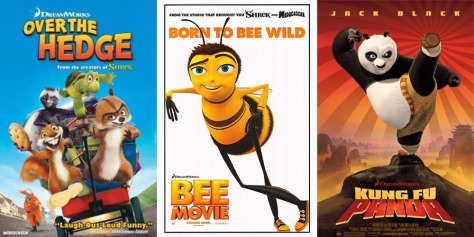There are two things I found interesting about the video (http://www.youtube.com/watch?v=Vg7-BhpyfEc). The first simply has to do with the fact that the none of the people in the pictures (presumably the family members of whoever made this video) are little children. Secondly, I thought it interesting how some of the characters are portrayed as real people, and others as still very cartoony– even when they’re all based on animations.
The family in these photos looks to be made up of two boys and their mother, but both “boys” look to be in their mid- to late teens, or maybe even a bit older. And yet, they’re posing and smiling with a whole slew of Disney characters, and all wearing Disney t-shirts as well. I’m also going to venture a guess that one of the two boys is the one who made this video, and he certainly wouldn’t have done that and put it on the internet if he wasn’t completely enthusiastic about sharing his Disney experience with others. You’d expect that only little kids would get excited about meeting their favorite characters, but this video shows that apparently that is not always the case. People of all ages love getting to meet Donald and Goofy.
The other aspect of this video that I found a bit strange was that some charcters are people in normal costumes- like Pocahontas, for instance. She’s a woman who looks like the animation of Pocahontas, in a dress like the character wears. But then other characters– even other human characters, like the family from The Incredibles, are portrayed in the parks by people with these giant cartoon masks. Why not just find a woman who looks like Elasti-Girl? Why have her wear the creepy head?
My one answer to this could because I noticed a lot of the cartoonish characters are children– the kids from Incredibles, as well as Lilo from Lilo and Stitch. Perhaps Disney has some rule about not making kids walk around in the hot sun all day being personable and charming. But then, there’s still other characters with the giant cartoon heads, like Capt. Hook and Smee. I don’t understand it, and I kind of think it’s really creepy. If I were a little kid, those masks would terrify me…
Lastly, I noticed there were Power Rangers and Star Wars characters in these pictures. In the comments of the video, someone brought this up, and the reply was that you can meet them at Hollywood Studios, which I did not know. But when you think about how Disney is such an American thing, and how all these characters have become part of American tradion, it makes a certain kind of sense that other beloved American franchises would be represented at the parks as well. Also, Star Wars and Power Rangers are both typically aimed at boys, so perhaps by having these characters, Disney keeps the character-meeting hype up for all ages and genders.
Yet, this brings us back to the beginning. It seems like even if Darth Vader and the Pink Power Ranger hadn’t been at the Park the day this family went, the two teen boys would still have been excited to see and meet all of the other characters. I’m pretty sure Disney just owns this family.


